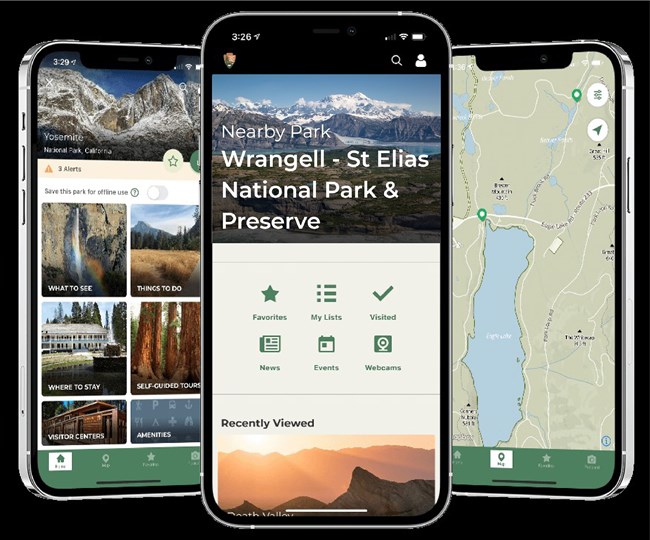|
Wrangell-St. Elias National Park and Preserve is unmatched in its wildness, history, and scenic beauty. For ALL visitors, a visit to Wrangell-St. Elias takes effort. It is a remote and rugged place. The rewards, though, are always worth the effort. You may find yourself gazing out towards a sea of glacier ice or range of volcanoes, listening to a raging glacial river from the bottom of a limestone canyon, or exploring the buildings and stories of an old copper mine. Whatever your interests and abilities there is something for everyone at Wrangell-St. Elias. We invite you to experience first hand this special place. On this page you will find services specifically designed to help our visitors with disabilities. If there is something else that we may be able to do to facilitate a meaningful visit for your group please contact us. Wrangell-St. Elias Visitor Center: Kennecott Area: Captions for the The Kennecott Mill film can be turned on upon request. Simply ask the ranger introducing the film to turn on the captions. Hearing Assistance To ensure the Hearing Helper system is available for the program you would like to attend please contact the appropriate location:

NPS Mobile appThe former NPS AD Tours app is being retired, but the Audio Description accessibility for several exhibits in the park is available by following these steps:
This app includes audio description designed to assist blind and low vision visitors in navigating and experiencing exhibit spaces at the parks listed in the app. At some parks, the content has been paired with bluetooth proximity triggers that automatically update and provide description for what's nearby as you walk through exhibits. Check at the main visitor center desk for more information about what's available. This app is designed to be used with the screenreader voiceover (apple devices) or talkback (android devices) on your phone. Service Animals - Accessibility (nps.gov website)Dogs classified as service animals are individually trained to perform a specific task that assists a person with a disability. Service dogs are legally permitted anywhere that visitors can go. Examples of such work or tasks include guiding people who are blind, alerting people who are deaf, pulling a wheelchair, alerting and protecting a person who is having a seizure, reminding a person with mental illness to take prescribed medications, calming a person with Post Traumatic Stress Disorder (PTSD) during an anxiety attack, or performing other duties. Service animals are working animals, not pets. The work or task a dog has been trained to provide must be directly related to the person’s disability. Emotional support, therapy, and companion animals are not service animals under the Americans with Disabilities Act (ADA). They have not been trained to provide a task directly related to a disability, therefore emotional support animals are considered to be a pet. Service dogs-in-training are not service animals under ADA, but are considered pets. Pets must abide by the Individual Park Pet Regulations (nps.gov website). |
Last updated: July 9, 2024
